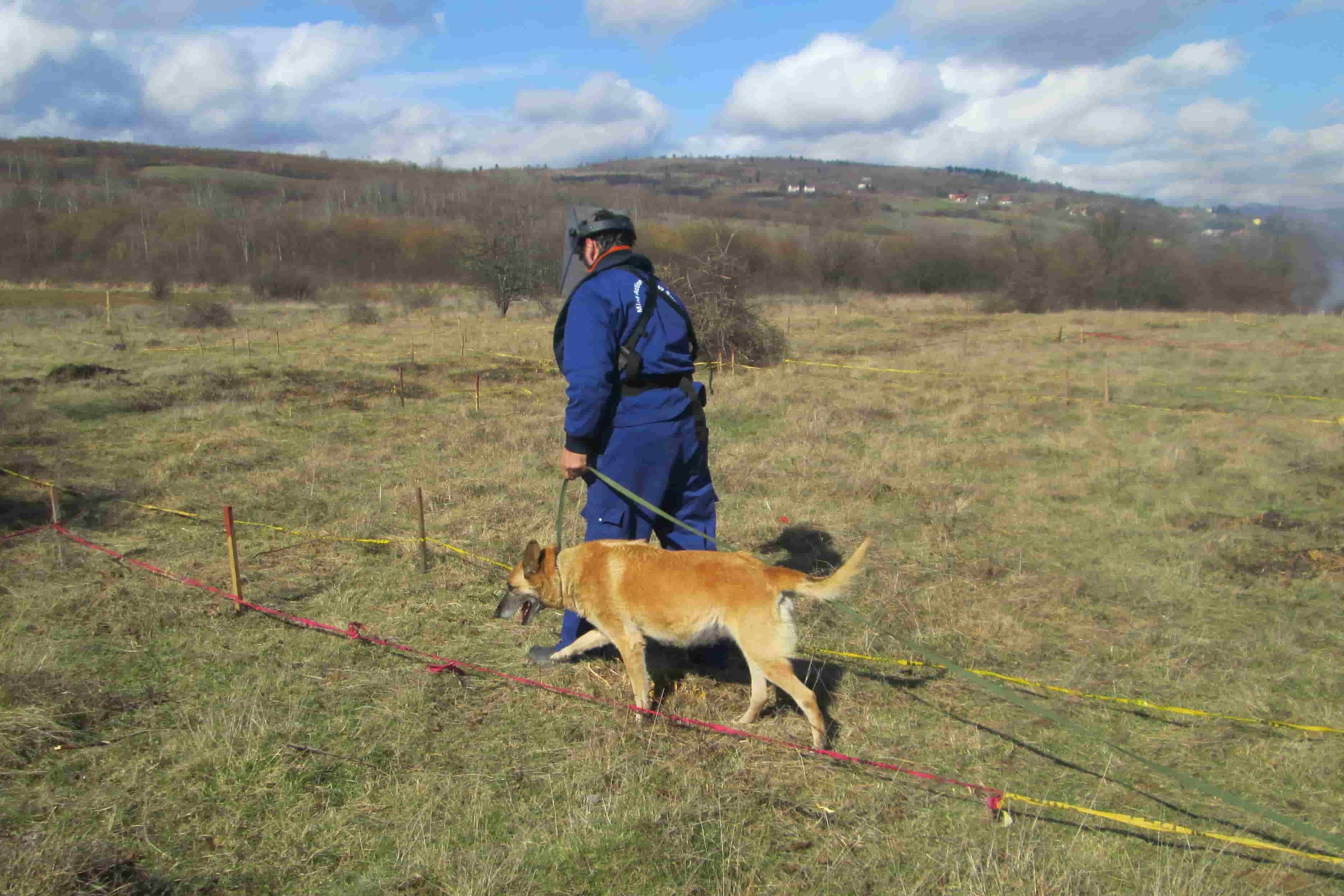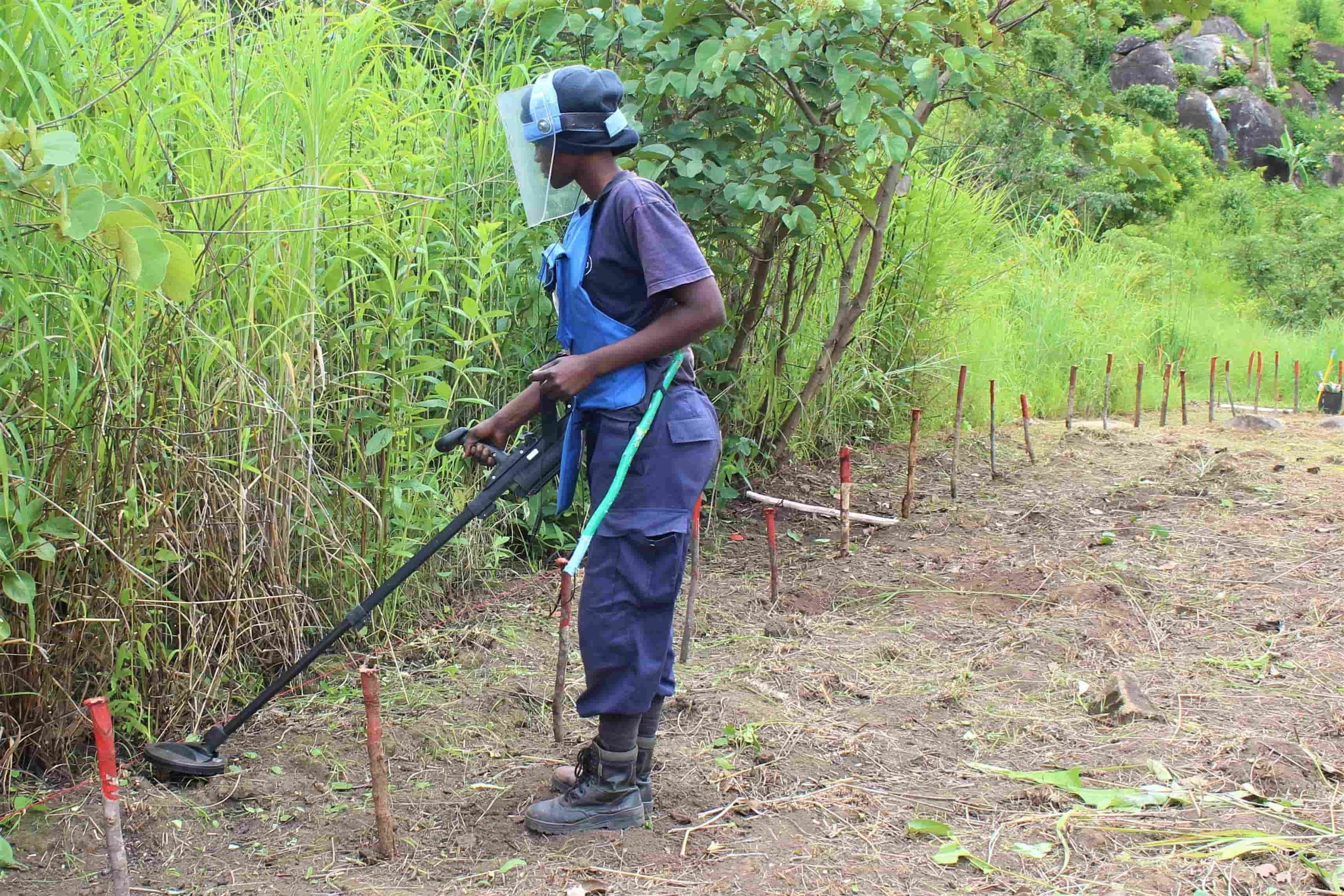MINE CLEARANCE
Nobody knows how many mines are still buried around the world. Estimations range between 60 and 100 million. We contribute towards reducing the number of mines day by day.
Mines do not differentiate between enemy soldiers and children at play. Nor between war and peace.
Around one third of all the countries in the world are currently contaminated with landmines, cluster munition or other explosive remnants of war. Afghanistan, Angola and Iraq are among the most severely affected, as are Cambodia and Bosnia-Herzegovina.
The lives of the local population improve considerably once regions are cleared of mines: fields, potable water, schools, hospitals and markets all become accessible again without danger. In addition, mine clearance is also an important aspect of peacebuilding; it is often a component of peace negotiations and treaties. The horrors of war cannot fade until the mines are cleared.
Standardised approach
A number of steps are required to make land utilisable once again without hazard after a war or conflict. Mine clearance is expensive and time intensive and is implemented in accordance with precisely defined specifications.
1. Procurement of information (non-technical support)
Non-technical support activities are aimed at systematically collecting and analysing information relating to minefields. This information includes the run of front lines, mine maps, information from the local populace, accident reports, etc. This knowledge is used to identify and register presumably contaminated areas.
2. Delimiting and characterising mined areas (technical support)
The next step focuses on identifying or confirming the exact location and boundaries of the mine fields to enable targeted mine clearance. Mine-free land can then be released for use.
3. Mine clearance
Once minefields have been defined, mine removal teams meticulously search the area for mines, identify and mark finds and subsequently disarm them.
4. Documentation and land release
All relevant data are documented and handed over to the competent authorities when work is concluded. The authorities carry out a quality inspection and release the land for use.


Mine-clearing methods
Various methods of technical investigation and mine clearance are often combined to locate and destroy mines – depending on topography, infrastructure, access routes, climatic conditions, resources and applicable legislation.
Manual mine clearance
Demining by hand remains the most recognised and widely practised method. It is often combined with other methods. Deminers work their way through defined grid patterns and sections centimetre by centimetre. Metal detectors, mine prodders and rakes can be used depending on the terrain and vegetation. Detected mines are marked and professionally eliminated.
Mechanical mine clearance
Machines are used to prepare for or support human activity in suitable terrain. Armoured vehicles can remove coarse vegetation and loosen the soil, for instance. Other machines can trigger mine explosions. Machines can clear larger surface areas from mines faster than human hands. While machines can be used with little exposure to risk, they are also expensive and require sophisticated maintenance.
Detecting mines with animals
Dogs can be a great help when searching for mines. Sniffer dogs sniff out and localise the explosives. They are very carefully trained so they can work accurately and safely in the mined area. Sniffer dogs need to be trained by experts and kept in appropriate conditions.
Rats have an excellent sense of smell and are also used to detect mines. The sniff out the explosives and indicate its location through scratching or "freezing". Great advantage: they are so lightweight that the mines do not explode. Trials with bees have demonstrated that they can also detect the smell of explosives.
